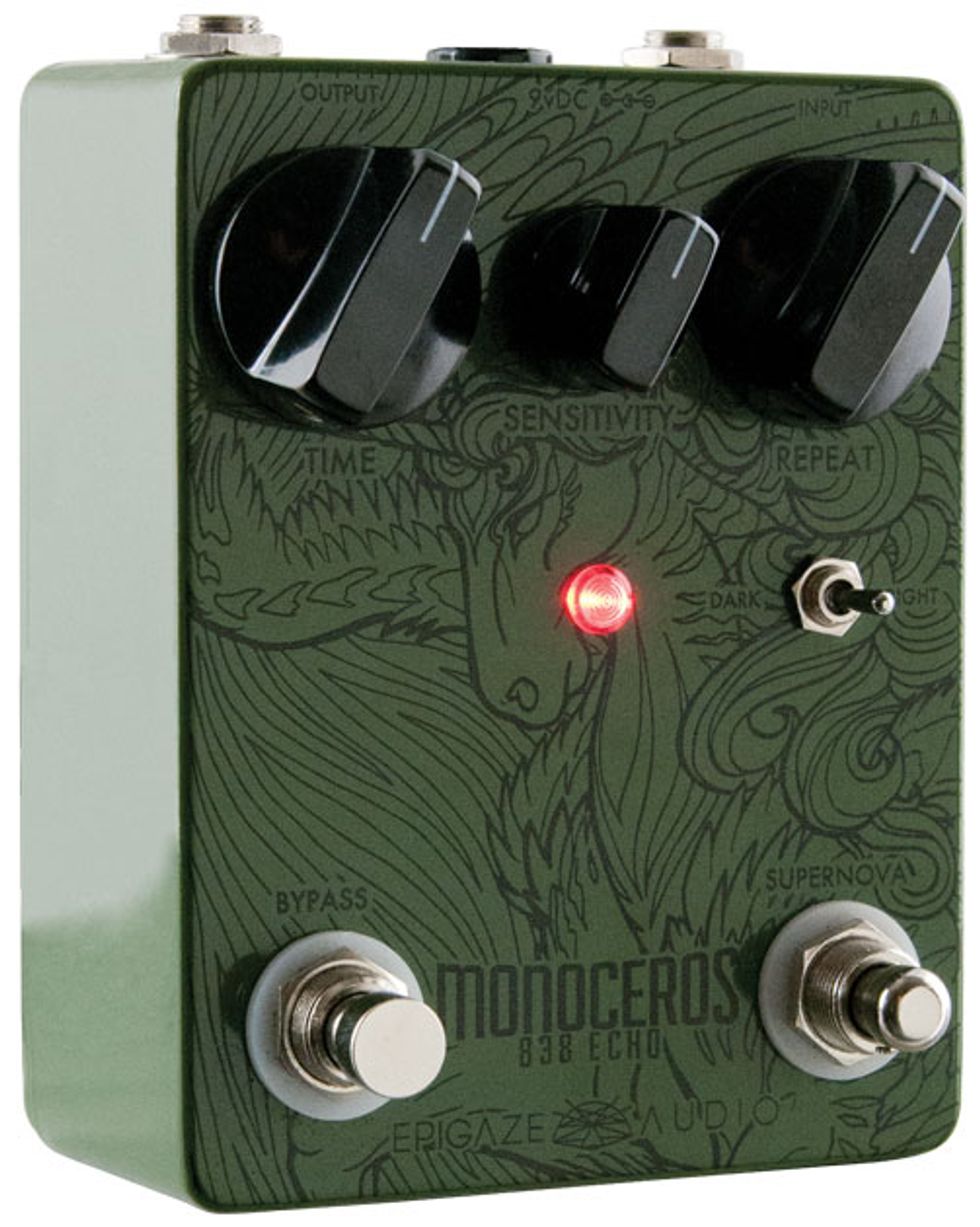If you’ve been paying any attention to the state of the stompbox universe, you’re probably aware that we’re in the midst of a delay pedal renaissance. Advancing DSP and the elevated quality of discrete components has spawned some wild and beautiful-sounding new echo devices.
The Monoceros 838 Echo from Epigaze Audio uses digital power to achieve cool vintage-styled delay effects—and more demented ends. With its momentary oscillation switch, you can move from tasteful to psychotic in a flash. This makes the Monocereos a delightful companion for texturalists prone to extreme sonic mood swings.
Explosions in the Box
In most respects, the Monoceros 838 is a no-frills echo. The enclosure houses a circuit built around the ubiquitous PT2399 chip. The pedal has 10-580 ms of available delay time and features typical delay controls: time, sensitivity (mix), and repeat. Oddly, two of the three knobs—time and sensitivity—increase values with counterclockwise turns.
This takes some getting used to and makes adjustments on the fly tough at first, especially in the heat of a performance. A bright switch adds sonic flexibility—it’s useful for making short delay settings pop in a mix.
Ratings
Pros:
Fun self-oscillating supernova function. Bright switch adds versatility.
Cons:
Large footprint. Counterintuitive knob rotation. Pricy.
Tones:
Ease of Use:
Build/Design:
Value:
Street:
$225
Epigaze Audio Monoceros 838 Echo
epigazeaudio.bigcartel.com
Weapon of Mass Oscillation
The Monoceros 838’s star attraction is its “supernova” function, which spirals your echoes into glorious oscillation at the tap of a soft-touch momentary footswitch. Regardless of where the pedal’s time knob is set, the oscillating signal comes on loudly and quickly. It’s particularly lethal when paired with big fuzz sounds and/or octave-down effects.
Epigaze Audio chose not to tamper too much with the PT2399 chip’s innately clean, bright sound—they use little filtering to mimic analog warmth, though that’s not necessarily a bad thing. Played with a humbucker-equipped Carvin Star through an early ’70s 100-watt Marshall Super Lead full stack at high volume, the 838 melded beautifully with the amp’s distortion, generating spaced-out shoegaze soundscapes and expansive post-rock swirl that would put a smile on the face of anyone with a taste for Sonic Youth’s or My Bloody Valentine’s amorphous walls of sound. A well-timed stomp on the supernova switch during lead passages summoned an explosive tornado of oscillation that added drama and power, but which dissipated quickly enough to be controllable. And with the right mix settings, the supernova function can create an undercurrent of oscillation rather than an in-your-face death-ray blast.
The Verdict
If you’re looking for thousands of preset voices, endless tone-shaping flexibility, or an exceptionally warm analog tone, the Monoceros 838 might not be right for you. But if you love the thrill of blasting audiences with massive self-oscillation detonations, the supernova function is potentially priceless. Noise-mongers, rockers, shoegazers, and psych-heads with a taste for the skronk—take note! This beast might be exactly the delay you need.



























